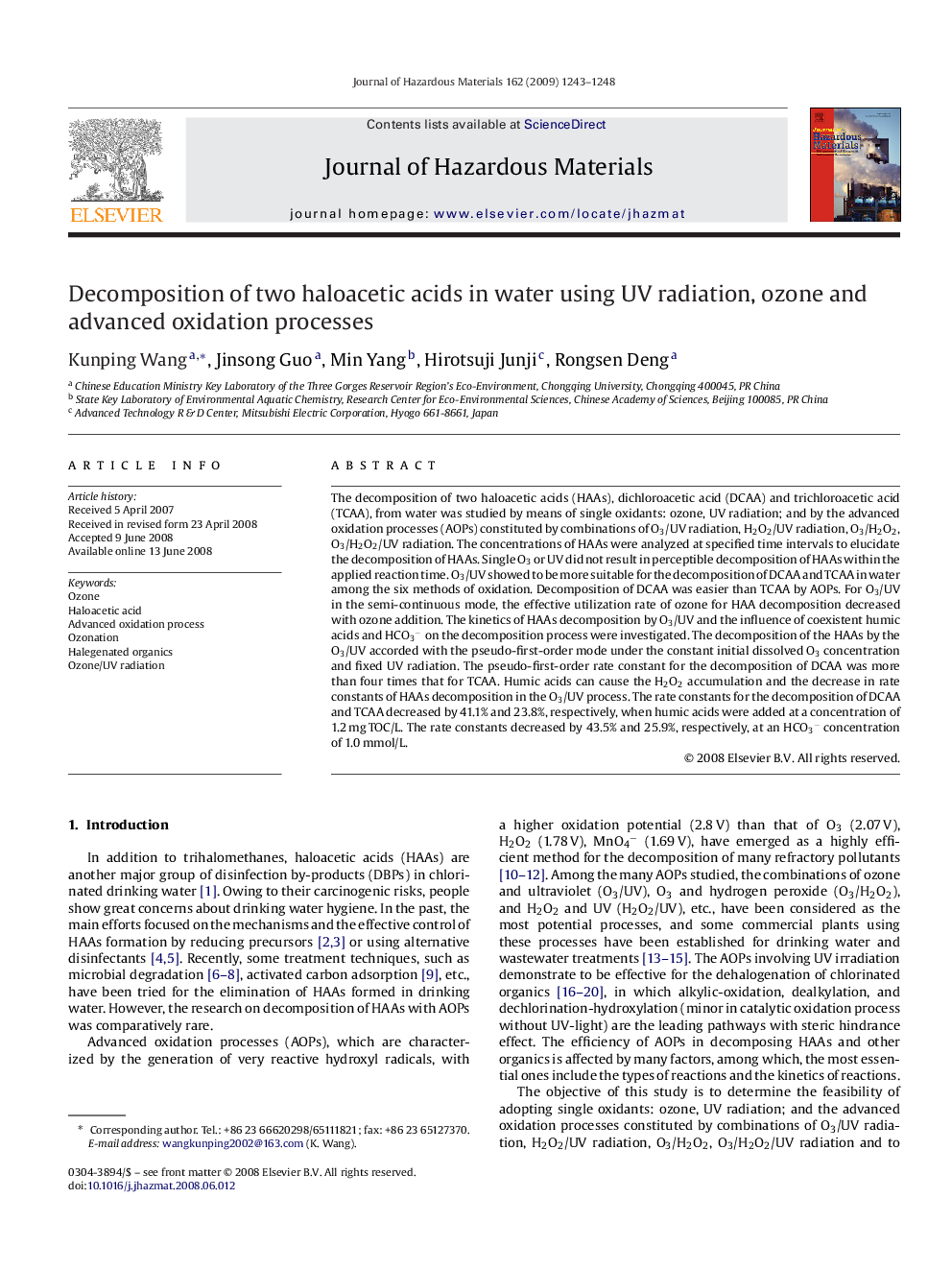| کد مقاله | کد نشریه | سال انتشار | مقاله انگلیسی | نسخه تمام متن |
|---|---|---|---|---|
| 582429 | 1453166 | 2009 | 6 صفحه PDF | دانلود رایگان |
عنوان انگلیسی مقاله ISI
Decomposition of two haloacetic acids in water using UV radiation, ozone and advanced oxidation processes
دانلود مقاله + سفارش ترجمه
دانلود مقاله ISI انگلیسی
رایگان برای ایرانیان
کلمات کلیدی
موضوعات مرتبط
مهندسی و علوم پایه
مهندسی شیمی
بهداشت و امنیت شیمی
پیش نمایش صفحه اول مقاله

چکیده انگلیسی
The decomposition of two haloacetic acids (HAAs), dichloroacetic acid (DCAA) and trichloroacetic acid (TCAA), from water was studied by means of single oxidants: ozone, UV radiation; and by the advanced oxidation processes (AOPs) constituted by combinations of O3/UV radiation, H2O2/UV radiation, O3/H2O2, O3/H2O2/UV radiation. The concentrations of HAAs were analyzed at specified time intervals to elucidate the decomposition of HAAs. Single O3 or UV did not result in perceptible decomposition of HAAs within the applied reaction time. O3/UV showed to be more suitable for the decomposition of DCAA and TCAA in water among the six methods of oxidation. Decomposition of DCAA was easier than TCAA by AOPs. For O3/UV in the semi-continuous mode, the effective utilization rate of ozone for HAA decomposition decreased with ozone addition. The kinetics of HAAs decomposition by O3/UV and the influence of coexistent humic acids and HCO3â on the decomposition process were investigated. The decomposition of the HAAs by the O3/UV accorded with the pseudo-first-order mode under the constant initial dissolved O3 concentration and fixed UV radiation. The pseudo-first-order rate constant for the decomposition of DCAA was more than four times that for TCAA. Humic acids can cause the H2O2 accumulation and the decrease in rate constants of HAAs decomposition in the O3/UV process. The rate constants for the decomposition of DCAA and TCAA decreased by 41.1% and 23.8%, respectively, when humic acids were added at a concentration of 1.2 mg TOC/L. The rate constants decreased by 43.5% and 25.9%, respectively, at an HCO3â concentration of 1.0 mmol/L.
ناشر
Database: Elsevier - ScienceDirect (ساینس دایرکت)
Journal: Journal of Hazardous Materials - Volume 162, Issues 2â3, 15 March 2009, Pages 1243-1248
Journal: Journal of Hazardous Materials - Volume 162, Issues 2â3, 15 March 2009, Pages 1243-1248
نویسندگان
Kunping Wang, Jinsong Guo, Min Yang, Hirotsuji Junji, Rongsen Deng,